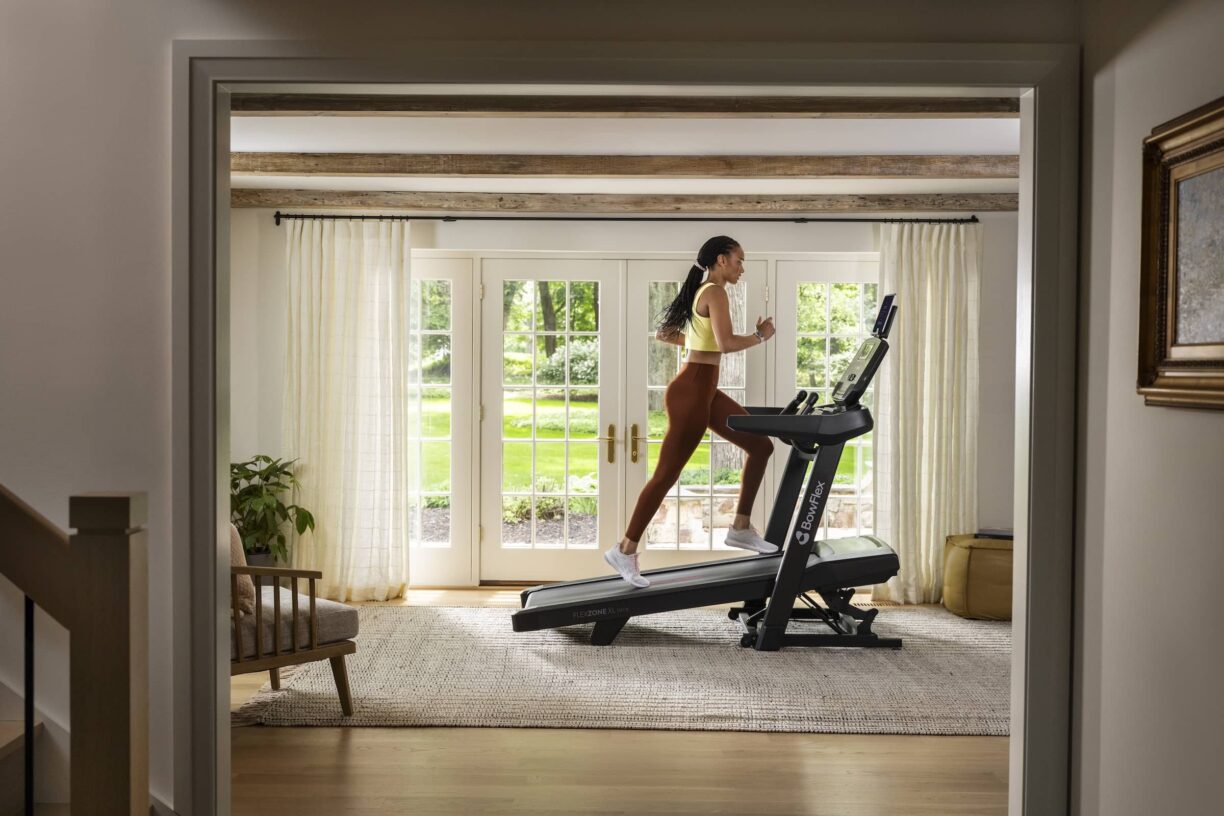What is weight training?
Weight training is the ideal route to increasing muscle mass when balanced with the right nutrition. More specifically, weight training is any exercise against resistance that leads to muscular fatigue within 12-15 repetitions.
By increasing protein intake, weight training can lead to increased muscle bulk and tone.
Does weight training have benefits other than adding bulk?
While primarily used by those looking to bulk out muscle, weight training can benefit almost everyone. Young men tend to use weight training to achieve their aesthetic goals, yet weight training can also help women who are looking to lose weight.
The reason behind the weight loss is that increasing muscle boosts metabolic rate and so it becomes easier to burn calories (even when you sleep!).
As we get older, our hormones change, which can lead to osteoporosis resulting in a decrease of bone density and loss of muscle tissue due to sarcopenia. To help avoid these issues when approaching middle-aged, it’s important to ensure you have strong bones and muscles to start with and weight training is the key to both.
As for seniors and those recovering from injury, building strength is essential to ensure a return to full functional capacity to perform daily tasks, and weight training provides a vehicle to achieve this.
What else can I do to help build bulk?
To maximise your workout efforts, increase the amount of protein in your diet through chicken, fish and eggs or pulses, nuts and tofu. Eat frequent, small meals, especially after a workout. You have roughly a 30-minute window to optimise intake of carbohydrates and protein, so a shake is a good option here.
Weight Training exercises for beginners
With weight training, it’s important to allow enough time for muscles to rest between workouts, as this is when protein is absorbed and the muscles adapt to become stronger. I recommend switching up your weight training, working on separate areas of the body in each workout with a day of rest in between, totalling around four workouts per week. For example:
Day 1 ‒ pushing exercises (e.g. bench press)
Day 3 ‒ pulling exercises (e.g. pullups and deadlifts)
Day 5 ‒ lower body (e.g. squats, lunges, box step-ups)
Day 7 ‒ abs and core muscles (e.g. sit-ups, planking, bicycle crunches)
Within sessions, each exercise should be performed 3-5 sets of 12-15 repetitions before moving on to the next exercise. Ultimately, the aim should always be to aim for fatigue at the end of each set, briefly recover and then go again.
The best exercises are compound exercises, i.e. those that incorporate more than one joint and therefore engage several muscles simultaneously. For example:
-
Pushing exercises ‒ chest press, shoulder press, triceps extension
-
Pulling exercises ‒ chin-ups, bent over row, biceps curl
-
Leg exercises ‒ squat, lunge, hell raises
-
Core/stretch exercises ‒ crunches, yoga, Pilates
Advanced Weight Training exercises
For a more advanced routine, try incrementally increasing the intensity of your workout. There’s no need to stray from the basic foundation exercises described above as a squat will build strength in your legs whether you’re a beginner or more advanced. The crucial thing is that the weight is enough to induce fatigue in the 12-15 repetitions range.
The simplest way to achieve this is to increase the load, adding heavier weights for each exercise, increasing the volume through more sets, or reducing recovery time between each exercise so the muscles work harder.
Weight training exercises you can safely do at home
Weight training is best done in a gym given the specialist equipment. It can be very easy to injure yourself when doing weight training and gym equipment has been designed to minimise the potential for injury.
However, whilst not being able to get to the gym due to coronavirus lockdown can be frustrating, bodyweight exercise can still be effective in building muscle.
A normal press up or squat might feel easy, but by slowing down the movement to 10 seconds down and 10 seconds up, you will start to fatigue the target muscles. Now try a press up on one arm or squat on one leg, again for 10 seconds, you will still feel the burn, tire the muscles and so achieve gains, without using any heavy weights!
Safety tips
Always warm-up before lifting ‒ 5 minutes of light cardio such as jogging or cycling and mobilising the joints through arm circles and knee lifts are great options.
It’s always better to work out with a spotter (partner) for both extra motivation but also safety reasons, particularly if lifting heavy weights.
To reduce risk of injury, check online for technique tips related to each exercise you plan to perform and ideally, use a mirror to ensure you are performing exercises safely, before increasing the weight you lift.
One great option is TV.fit which offers a huge library of workout videos from experts, helping you hone your technique while building muscle mass.
ABOUT THE AUTHOR
Dean Hodgkin is a fitness expert, writer, speaker and Head of Programming at TV.fit. He has been the recipient of the International Fitness Showcase Lifetime Achievement Award,
Voted Best International Fitness Presenter at the One Body One World awards ceremony in Times Square, New York City, and received the ECA International Career Achievement recognition award in the USA. Dean was also nominated as a top fitness expert by national UK newspaper, The Independent on Sunday.
Dean is a founding member of the prestigious Fitgroup UK panel of industry experts, creating initiatives to enhance group exercise delivery across the sector and to increase public participation nationally. He is often engaged in speaking events and radio work, being the Resident Fitness Expert on Channel 5’s Terry Wogan and Gaby Roslin show.
https://www.instagram.com/iamtv.fit
https://www.facebook.com/iamtv.fit








